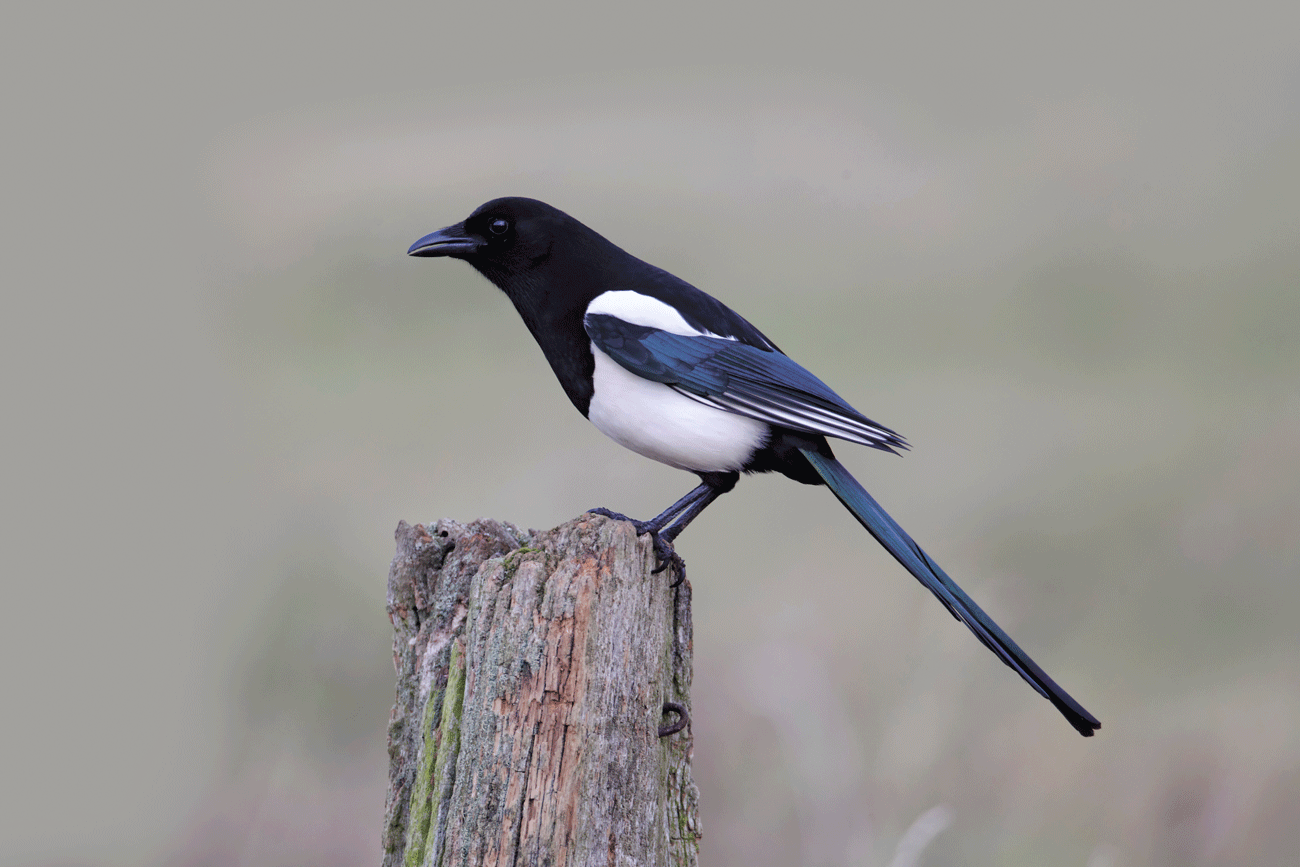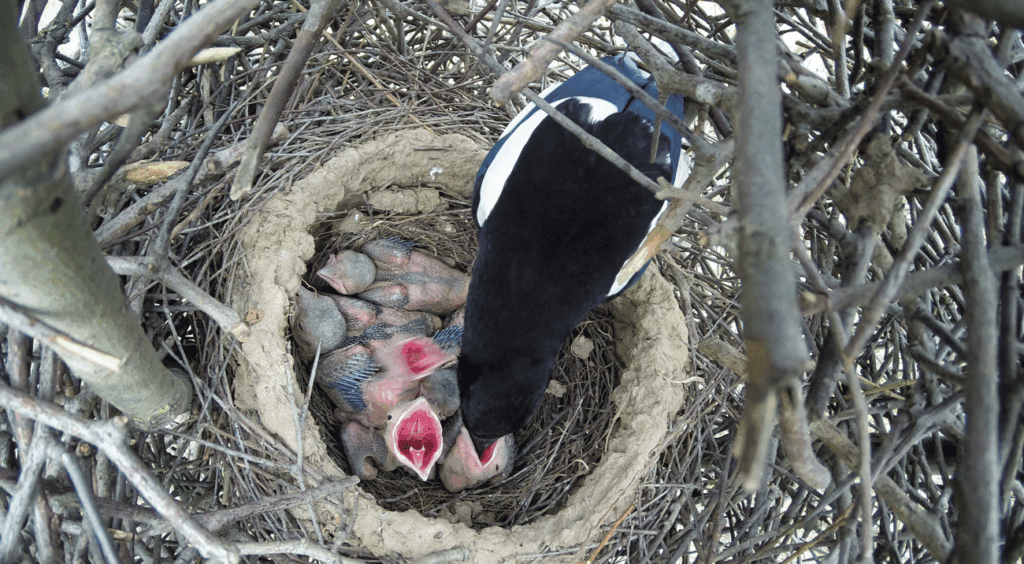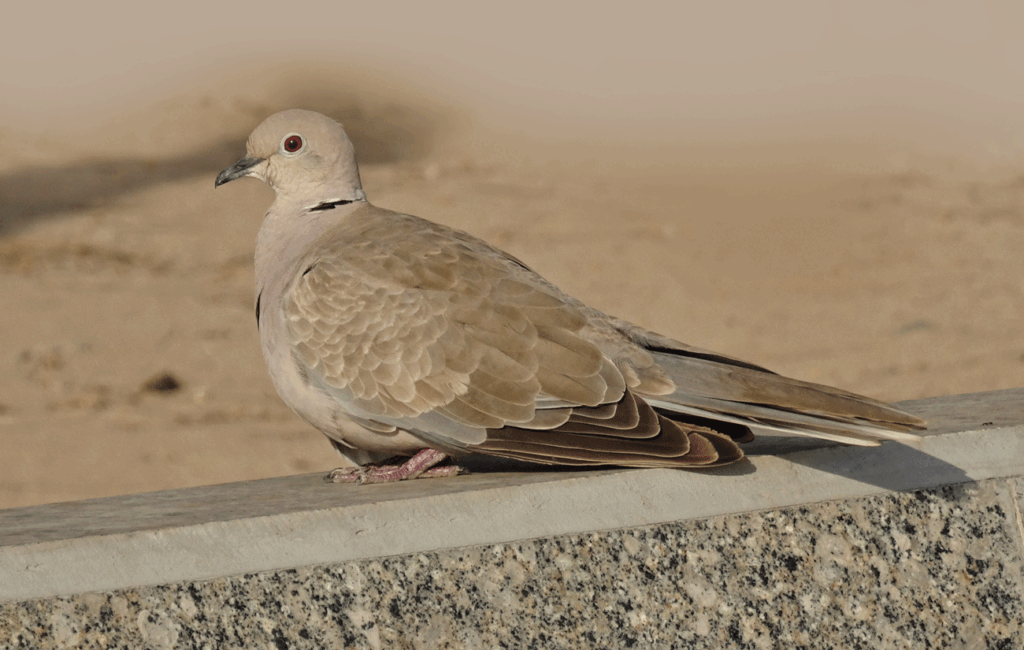
Main Photo: Magpie, Pica pica
It was the best of times – until they turned up.
Some noisy builders started work just when I was looking forward to a nice quiet summer.
They arrived in late March and immediately showed a bit too much interest in a hawthorn bush at the end of the garden for my liking.
Magpies. Not my favourite species. Boisterous, bossy and brash – and no great friend to many other smaller birds whose chicks are at the mercy of these big bullies.
My uninvited guests were around all day and it soon became evident they were not just passing through. They were moving in and building a home. Just five feet above a none too impressed breeding Blue Tit.
Over the next week I did, however, develop an admiration for the Magpies’ construction skills. They set about building their nest with the whippy outer 18 inches of nearby oak branches.
Prickly hawthorn was also added, perhaps not so much to ward off would be intruders but to make a statement: ‘We’re tough and you sure don’t wanna mess with us!’

One inquisitive squirrel got a bit too near one day and was sent packing as both Magpies launched a furious attack. ‘Get off our property, sucker!’ I don’t think the rodent made that mistake again.
Gathering the nesting material took patience. There were many fallen twigs on the ground nearby but these were evidently not good enough for Mr and Mrs Fussy. Everything had to be new.
Old stuff was brittle and would snap during intricate weaving. The duo spent many hours flexing growing twigs, this way and that, until they could peel off the limp remnant and take it to what was now a platform.
By day five the outer shell of the domed nest was complete and much of the roof was in place. The female often now sat in the nest to supervise the male’s work and ensure he did a proper job.
A week into the building works they were still not done. The finishing touches were being added as they carefully weaved more supple stems into all remaining gaps.
Both Magpies then gathered mud from the lawn and used it to line the bottom of the inside so no thorns would pierce through into the chamber.
Finally the birds gathered moss to make the huge spherical nest a comfortable place to settle down.
By day eight the female was sitting and only the occasional flick of her moving tail was visible. The male was often seen feeding her, by apparent regurgitation, but I was surprised how frequently she left the nest to exercise or feed.
Gradually the host tree’s summer growth shrouded the goings on inside but nearly three weeks later there was a flurry of parental activity. Chicks had successfully hatched and both parents began to be increasingly busy feeding them.
There was another surprise too. I had expected meals to be noisy affairs but the kids were surprisingly quiet. Towards the end of May they were out of the nest and giving the typical Magpie grating chatter to attract attention.
I counted three nearly full-size Magpies. They were surely too mature now to still be begging for food from mum and dad. Apparently not.

Meanwhile there had been some other garden action. A Collared Dove had started taking dead twigs into a tree only ten feet away from the Magpie’s nest. That was asking for trouble.
Collard Doves and breeding don’t have much luck in my garden. One laid an egg as early as 8th January and soon abandoned its attempt after snow. Their nests have also fallen victim to gales.
Two years’ ago the male of another pair – and they are lifelong partners – bravely and successfully chased off a Magpie. The intruder was heading for the conservatory and managed to pull up in time.
The smaller bird didn’t and was instantaneously dead. Its mate carried on sitting in the nest for two days before giving up.
This time the Collared Doves were not only courting danger by being so near the Magpies but were also building a flimsy nest no more than six inches across on a very visible low branch. The female’s head jutted out one end and its tail the other.
Two eggs soon appeared and every morning I expected to look out and see disaster. But the mum continued sitting and managed to hatch both eggs. With the Magpies forever present, and the skinny little fellas now unprotected by the female, their days were surely limited.
They were hard to spot at first but became more obvious as they grew and their down blew in the wind. Every day they survived I was amazed. The expanding mass of white bird droppings below the nest would surely give them away.
Incredibly they managed to avoid the Magpies’ attention. But there was soon so little space left for that the inevitable happened. The biggest one fell out.
I decided to intervene when I found it on the lawn where it would be a tasty dish for foxes, cats – or Magpies. I placed the squab in an adapted kid’s plastic sledge, with sides, just below the nest. This was as far as I could reach and I hoped the parents would find it and feed it.
Unfortunately, the youngster stayed there only half an hour before jumping or falling out, never to be seen again.
Meanwhile its sibling grew fast and was soon out of the nest and hiding more safely in the branches. It was fed there for another three days before being mature enough to, presumably, continue its battle for survival on the wing.











